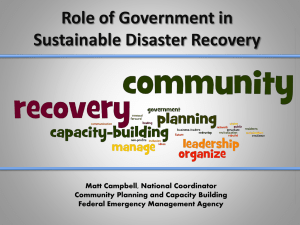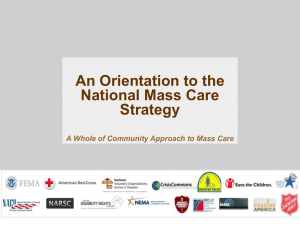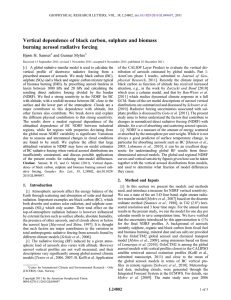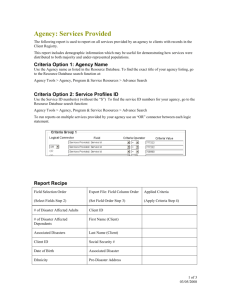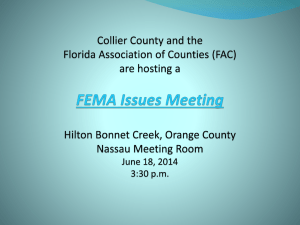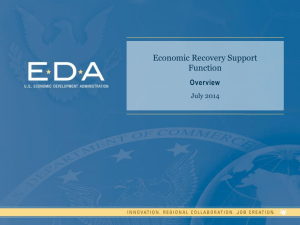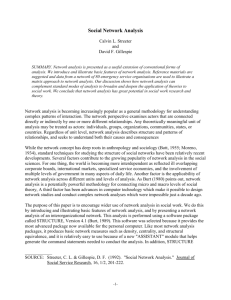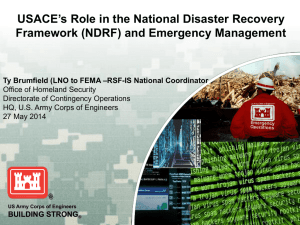National Disaster Recovery Framework
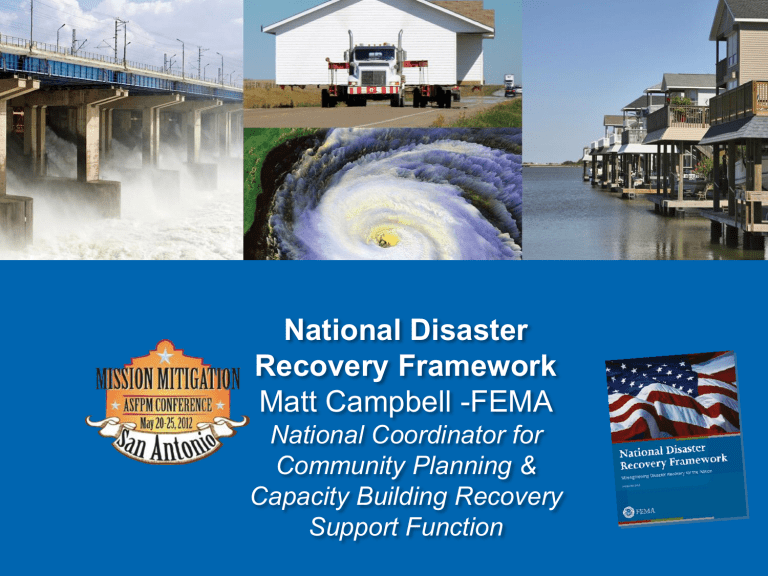
National Disaster
Recovery Framework
Matt Campbell -FEMA
National Coordinator for
Community Planning &
Capacity Building Recovery
Support Function
National Disaster Recovery Framework
Release September 2011
Why did we create the Framework?
• Past large-scale recovery efforts had revealed critical challenges www.fema.gov/recoveryframework
Why did we establish the NDRF?
– National Response
Framework
– Congressional Directive
– Presidential Policy
Directive on National
Preparedness (PPD-8)
How will the NDRF transform recovery?
• Post-disaster organizations
• Common understanding
• Scalable and flexible coordination structure
Major Themes
• Systematic and inclusive
• Leadership and unity of effort
• Pre-disaster & post-disaster recovery planning
• Milestones and progress
NDRF Key Element #1 - Leadership
• Local, State and Federal Levels
NDRF Key Element #2 – Recovery Support
Functions
• Community Planning and Capacity Building
(DHS/FEMA)
• Economic (Commerce)
• Health and Social
Services (HHS)
• Housing (HUD)
• Infrastructure Systems (USACE)
• Natural and Cultural Resources (DOI)
Key Element #3: Pre- & Post-Disaster Recovery
Planning
• Pre-disaster recovery planning effective coordination of recovery activities and expedites unified recovery
• Post-disaster planning foundation for allocating resources and provides the benchmark for progress
Community Planning and Capacity Building
Recovery Support Function
• Local level recovery process & organization
• Mitigation integration
• Forum for collaboration and leveraging
• Build on prior ESF #14 Long Term Community
Recovery
Lessons Learned through community recovery planning
• Keys to Recovery Success
– Act quickly
– Actively plan
– Engage the community
– Develop partnerships, networks and effective coordination strategies
• www.fema.gov/rebuild/ltcr/reports
Leveraging NDRF and CPCB for Better
Post Event Floodplain Management
• Better organized local governments to confront the rebuilding process and begin early planning
• Focus on local capacity – e.g. building permitting
• Leadership and organizational attention to policy choices and reinvestment in post event period
Leveraging NDRF and CPCB for Better
Post Event Floodplain Management
• Better integration of risk information across stakeholders in recovery decision making
• More engaged federal/state agencies supporting local governments in a more integrated way
• Communication & collaboration with professional organizations
For the Future
• Build capacity
• Prepare for recovery
• Encourage and support local ownership, leadership and management of recovery process
• Connectivity between all stakeholders to effectively leverage resources
